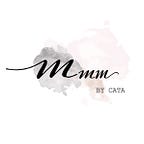Serbia, a European country considered as a land of rich heritage and culture where many inventors and scientists were born. Its capital, Belgrade has existed for more than 7000 years and is one of the oldest in Europe and famous for the nightlife, history, food and culture which attracts many tourism and locals.
Serbia is located in the Balkans in southeastern Europe and is bordered by Montenegro, Bosnia and Herzegovina, Croatia, Macedonia, Bulgaria, Hungary, Albania and Romania. Slovenia along with the first five countries formed the Socialist Federal Republic of Yugoslavia during the Word War II with Belgrade as the capital.
The country has a diverse territory crossed by some of the main rivers in the Southeast of Europe, it has fertile plains used for agriculture and many mountains. The country hasn’t coast, however, enjoying winter sports, natural parks, mountains roads and learning from its history, is always a good idea.
The climate is different in the north than in the central part of the country, hot summers, cold winters, colorful springs and autumns help to develop many of the activities that take place in a country with an area of 88,361 square km and 6.945 million of population. The economy of this country is based mainly on services, industry (energy, automotive, machinery and mining) and agriculture. Regarding religion, the country has a majority of 84.6% of Orthodox Christians.
— SERBIAN CUISINE —
The gastronomy focus on meats, vegetables, breads, cheese, fresh pastries and desserts and its because, with Serbia located on the crossroads between East and West, its cuisine has gathered elements from different cooking styles across Middle East and Europe (Greek, Mediterranean and Turkish). The country has banned the import of genetically modified foods, what makes its cuisine distinguished fresh, mild flavors, high quality and natural.
The dish, the Angus beef burger is a part of the mix of recipes from some of the city’s many restaurants (this restaurant is a Serbian — Italian fusion food). The burger has the traditional Serbian presentation (pita bread) and is filled with an Angus beef patty, a Scottish breed of small beef cattle, some cheese and pickles.
Another interesting dish from this fusion was the Jack Steak, a rump steak (cut of beef from the back of the cow) marinated in the well-known JD whiskey and cooked medium-term. The steak was served with pasta in cream cheese and some truffles. Truffles are a fruit comparable to mushrooms, they are characteristic of Mediterranean countries, they are expensive because they have a short shelf life and they are difficult to find (hunting real truffles requires a sniffer dog and a labor process).
The traditional breakfast in Serbia contains eggs, ham (in this case Italian prosciutto ham), fresh goat cheese and the famous Ajvar sauce. Ajvar is a pleasant sauce based on red peppers and eggplant, it’s served in an almost every dish that is salty and very natural as well as tasty.
The other most common breakfast in the country is Burek, this pastry is eaten warm and it can also be consumed after a good or bad night (party). It was first created in 1948 by a turkey baker and later spread to the Balkan countries. Burek is a round cake layered with greasy dough and filled with minced beef or cheese and then cut into quarters.
For dinner, the decision was easy as Belgrade is an active city at night and Dva Jelena a restaurant located in the busy Skadarska Street was a proof of that. The restaurant has been in operation since 1832 and serves all local food in a very good atmosphere with live traditional music.
Dinner began by cheering with Rakija, the Serbian national drink made from the destination of fermented fruit (plums, for example). It’s a very strong drink (up to 62% alcohol) and it consumed as an aperitif before the meal.
Some of the options for dinner were the Cornbread (Srpska proja) which is elaborated with polenta and cornmeal. Paprika breadsticks , Shopska (Šopska) salad (cucumbers, peppers, onions and white brine cheese), roasted peppers and bake potatoes were the rest.
Serbian stuffed Schnitzel (Karadjordjeva šnicla ) is a a rolled veal/pork steak stuffed with kaymak (Serbian cream cheese) and ham, then breaded and fried. The dish was a very elaborate and delightful part of the dinner as well as Cevavi (Ćevapćići), the traditional sausage from the Balkan area made with ground pork, beef and lamb.
Among all pastry and good desserts this country has to offer… I tried Sweet doughnuts (Slatki uštipci), a fried dough served with sweet toppings and local jams. It was very crispy and simple and it can be part of the breakfast and salty.
To finish, I verified that the berries are very common fruits in Serbian cuisine (the country is the largest exporter of raspberries) and the traditional “grandma’s sweet cake” was a sample of this. A light and simple cake topped with berries but very delicious. Breads, pastries, sweets are present in all Serbian bakeries and houses and I definitely enjoyed this tradition. You can check @mmmbycata on IG: www.instagram.com/mmmbycata/
